30/11/2015
This will be the final post in this epic series. I am currently experimenting with Japanese joinery and find it very refreshing. I think that it is growing on me and might therefore become an important element in how I design future pieces.
In the picture below you can see how I chopped the through mortises in the handle, which will accommodate two wedges.
The only parts that were glued were the centre divider into a very shallow dado in the base (as pictured below) and the small wedges that the through tenons received (see later in the post). The two end pieces in the picture below is simply keeping the centre divider in position while the glue cures.
I used this small Sargent smoother (their equivalent of a no. 2) for the final finishing of the surfaces.
This was my first time using shellac and it was a real pleasure. In our climate these flakes dissolved in about 20 minutes!! I saw craftsmen from colder parts of the world suggest that you leave it over night. A guy I met in a tool shop in Johannesburg told me that one can dissolve the shellac in “Blou Trein” (or methylated spirits) as I could not find “denatured alcohol” in Namibia or RSA. For some reason the the blue colour has no effect on the finish?? I do not understand how this works, but it does.
Custom made wedges.
Wedge slots.
I used a feeler gauge to work the Titebond into the wedge slots before driving the wedges home with my shop built plane hammer.
As so.
So there you go, Bob’s your uncle and Ted’s your aunty! I still have to do a little bit of finishing work on the protruding-wedged-through-tenons, but that essentially concludes this little project.
I hope you enjoyed the series.
11/1/2016
At the beach house during the 2015 December holidays.

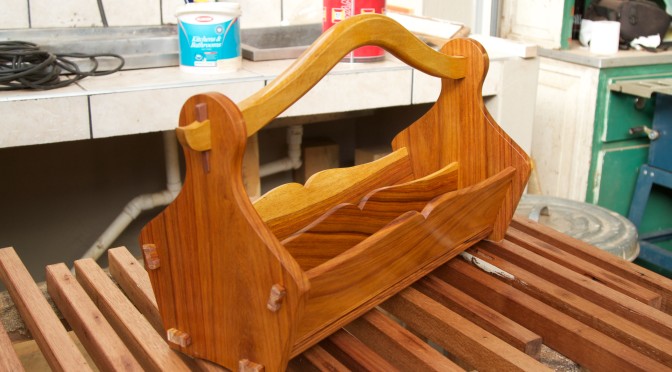

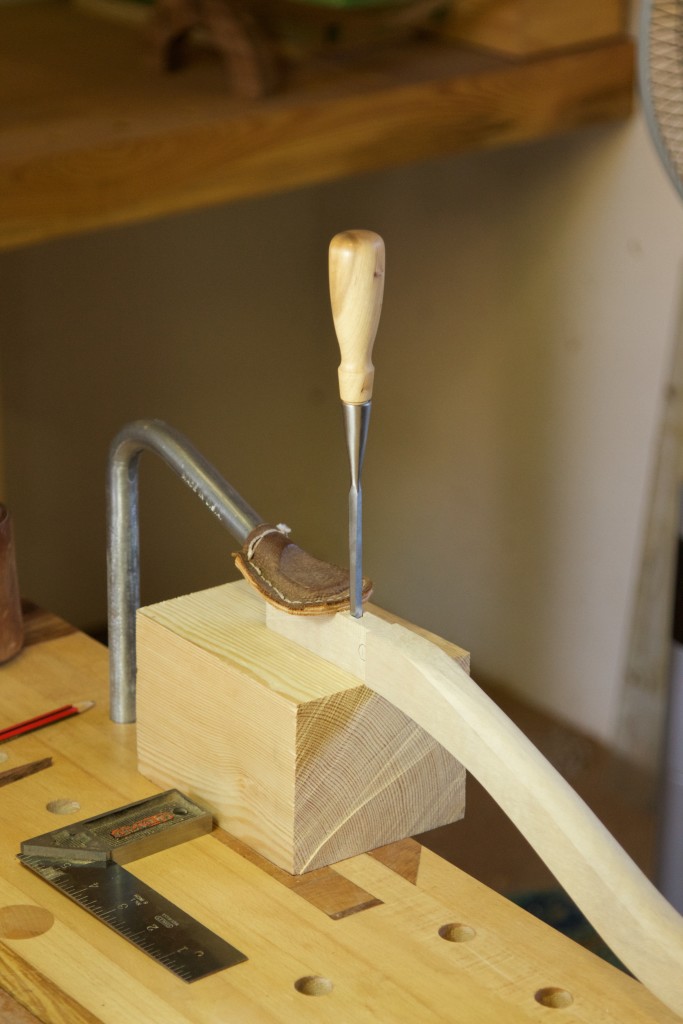

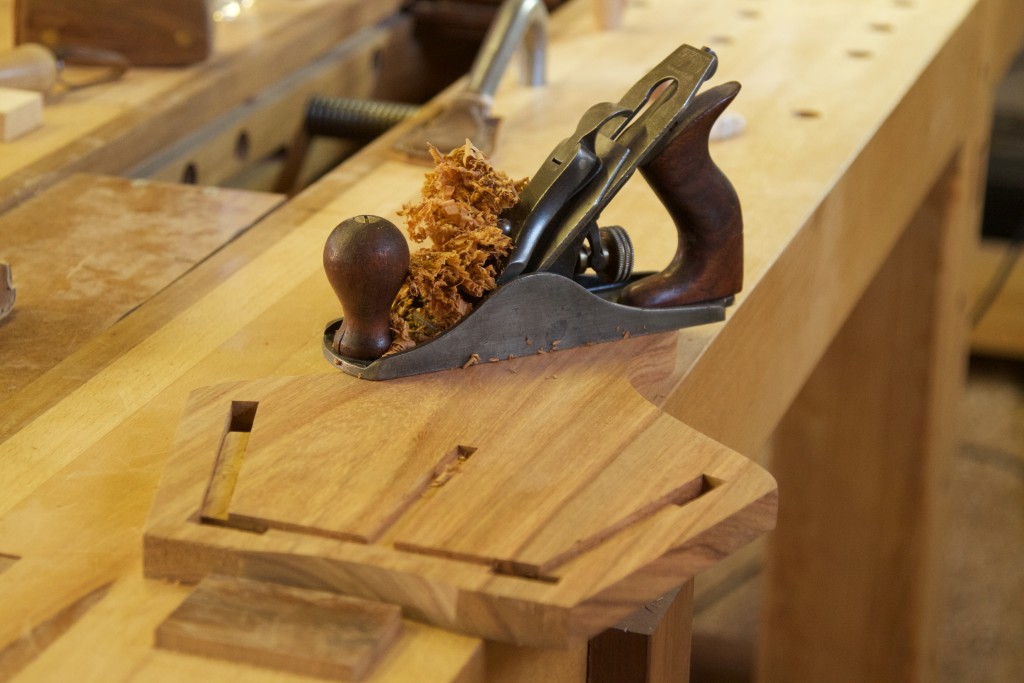


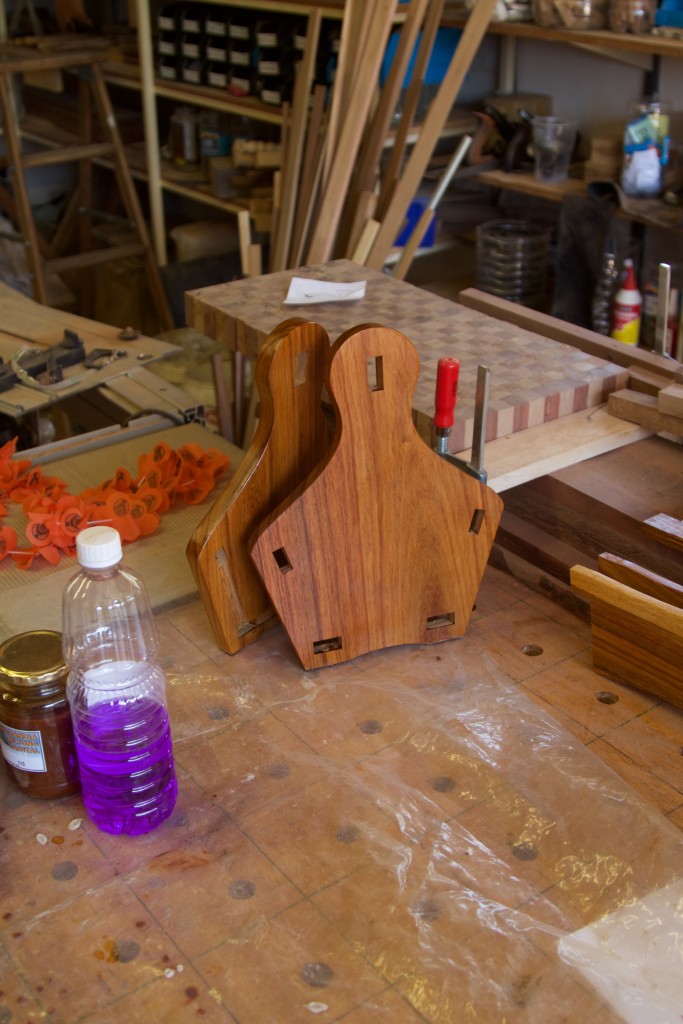

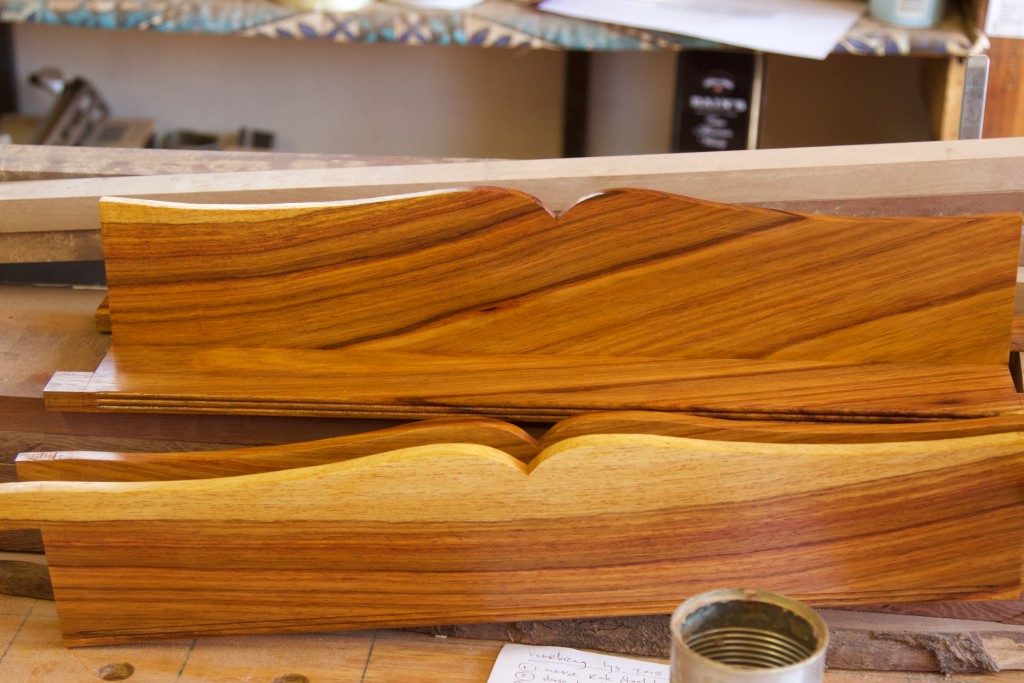

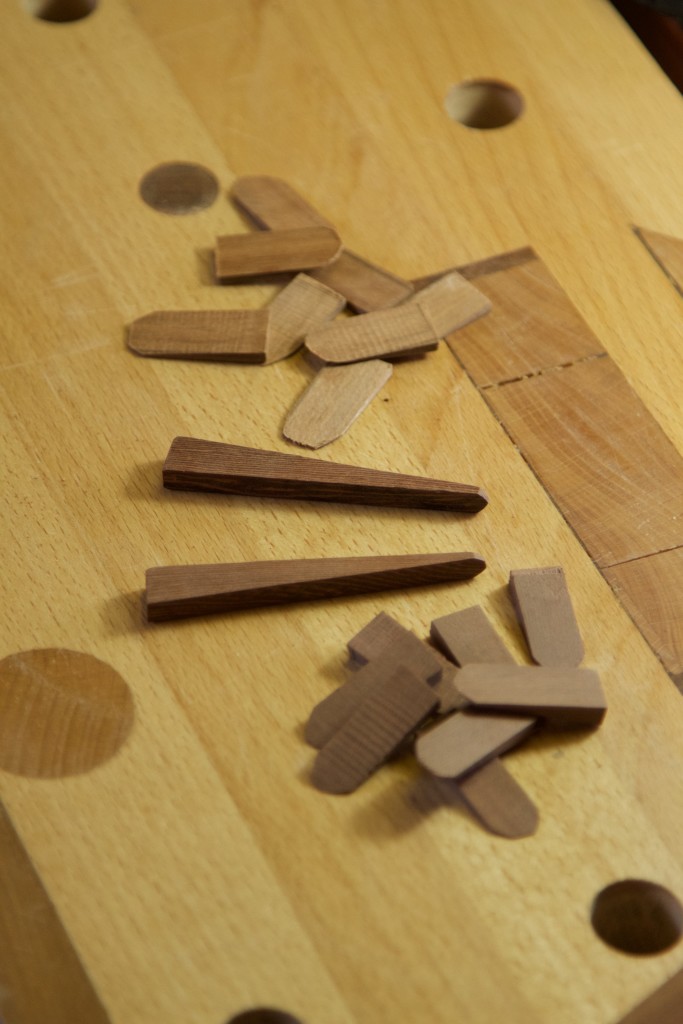
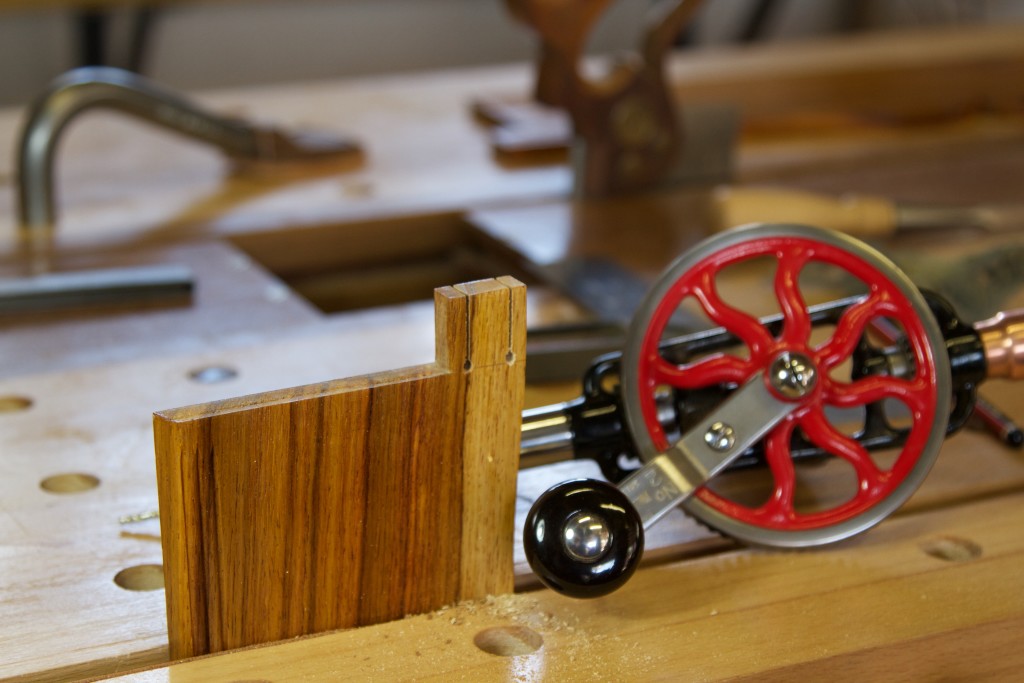
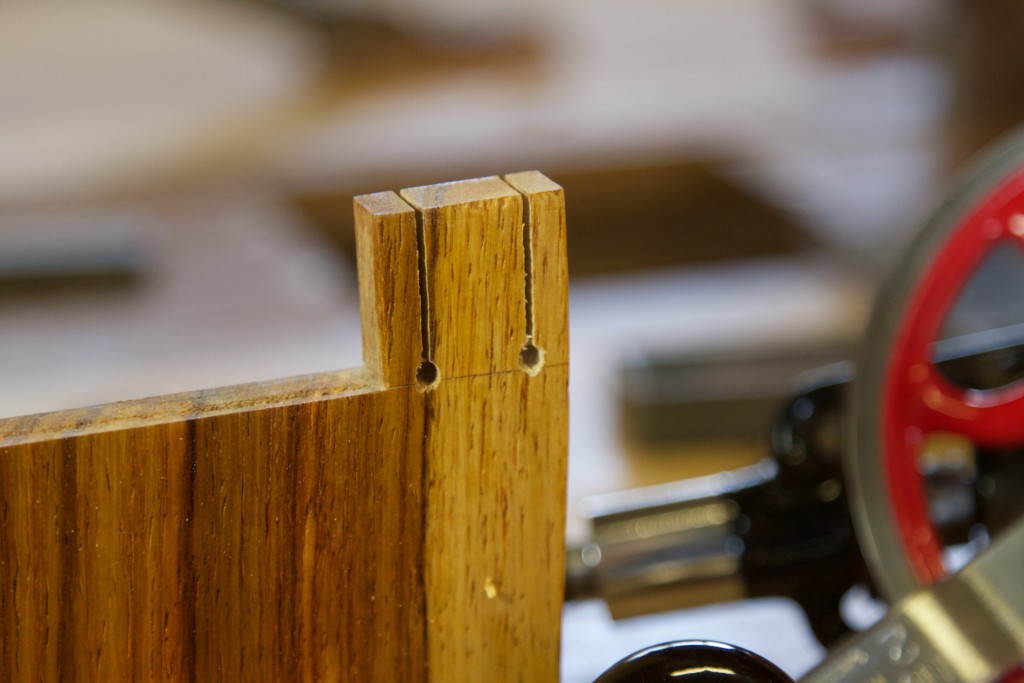

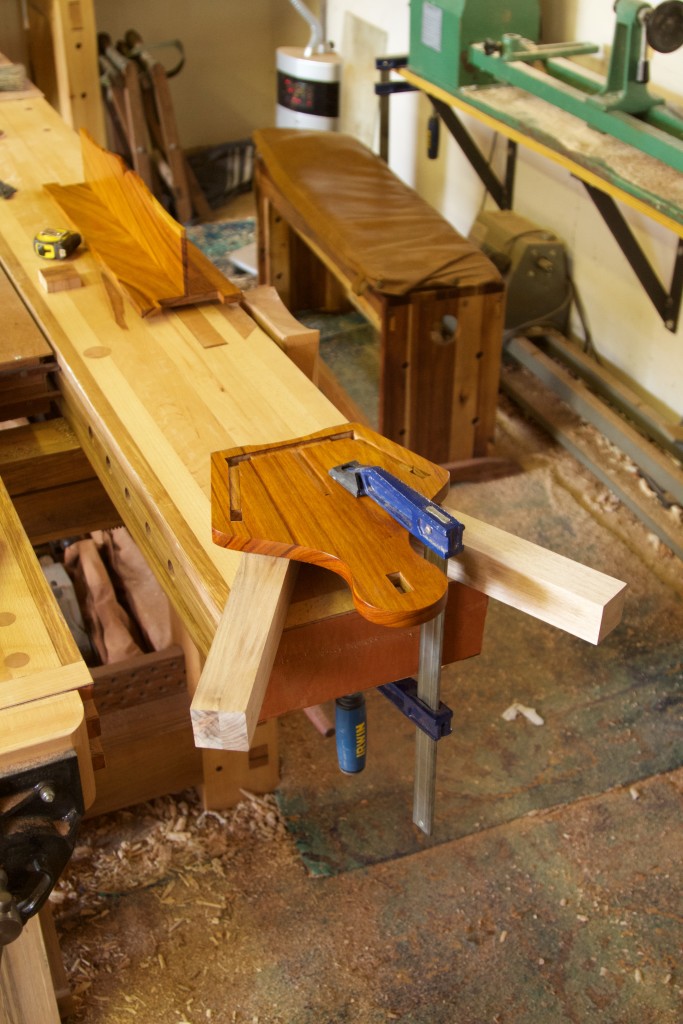
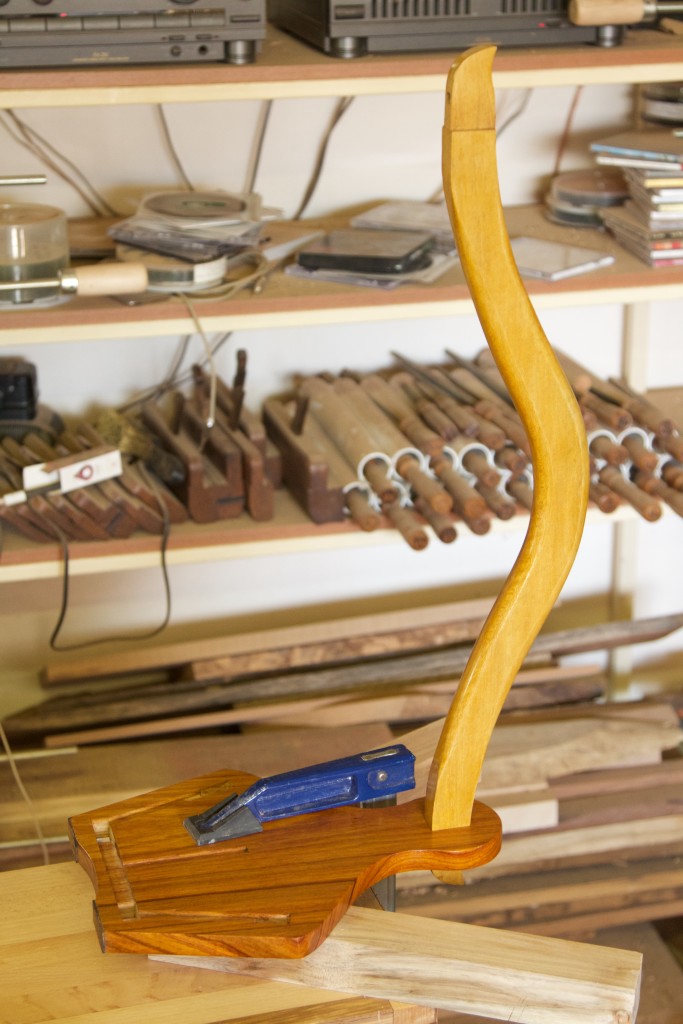
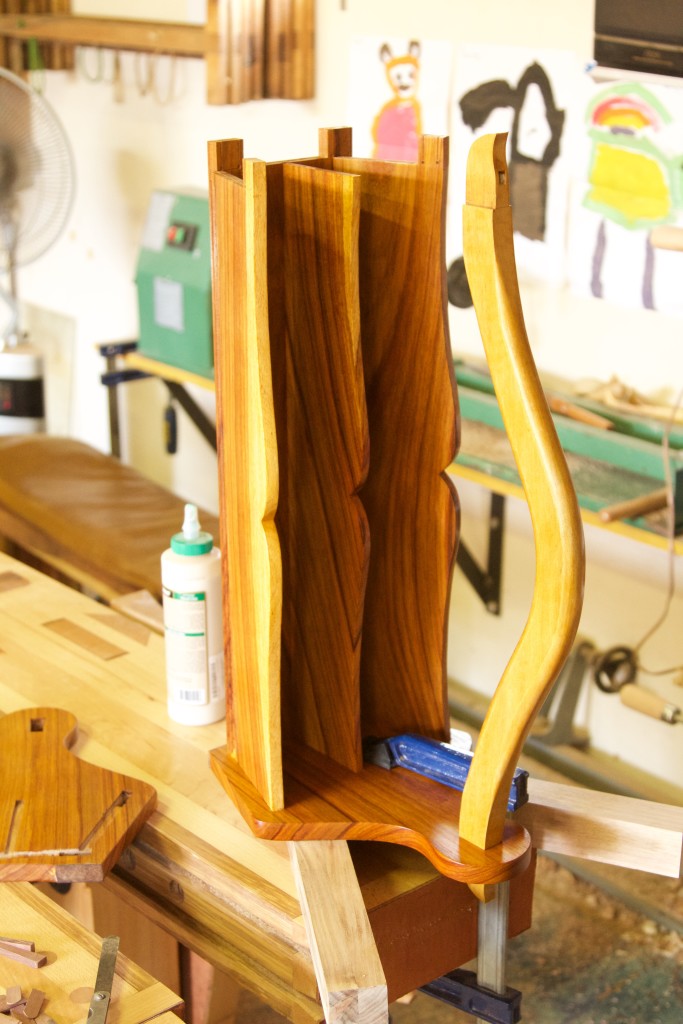
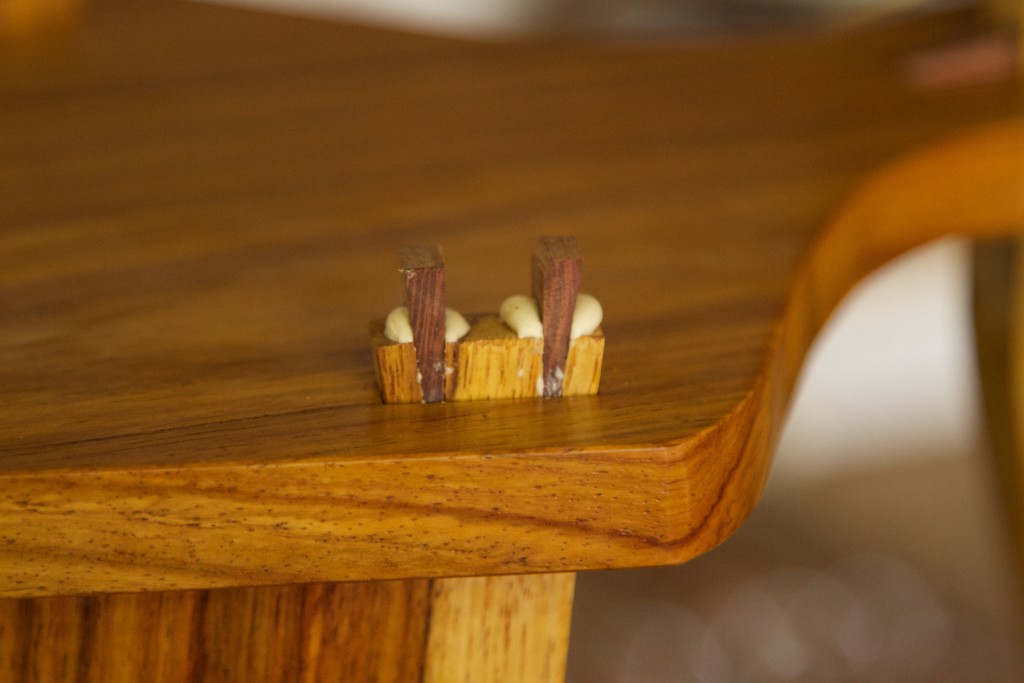
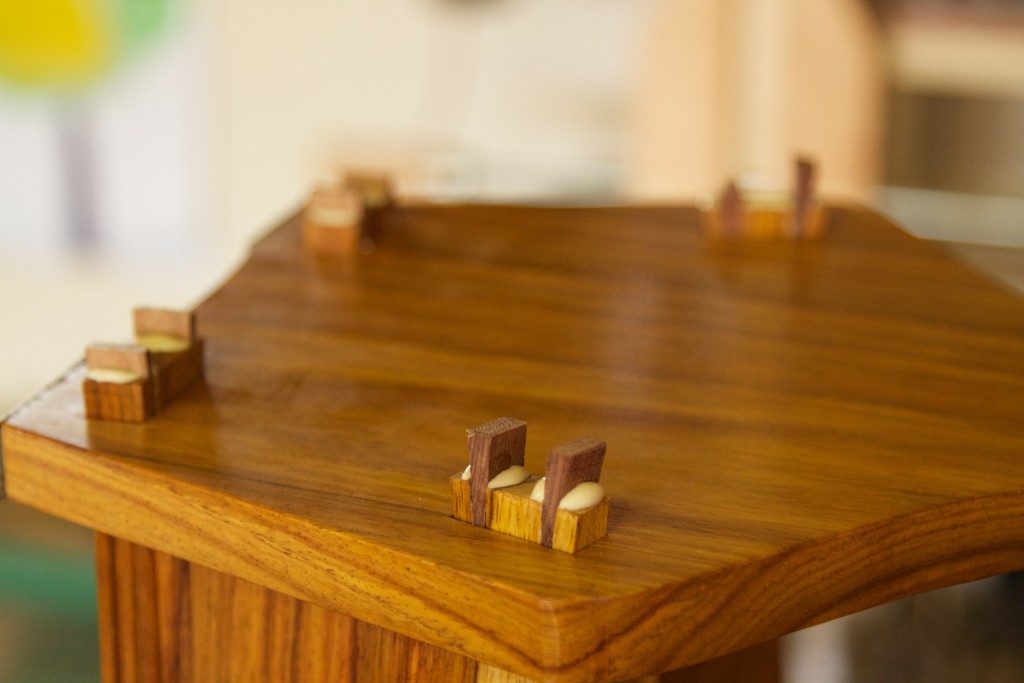
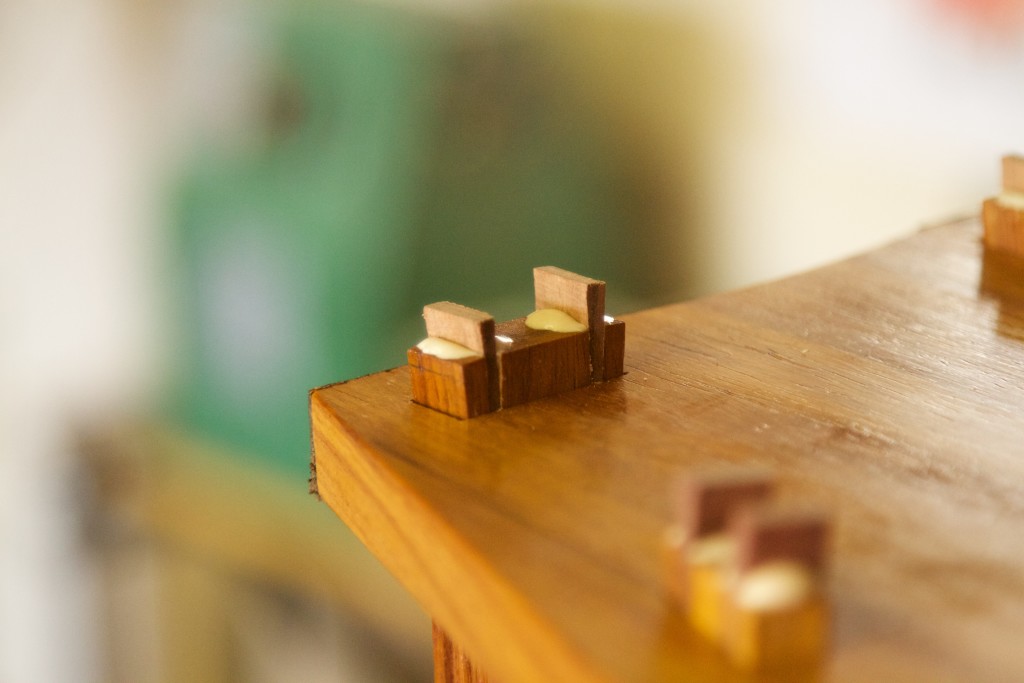

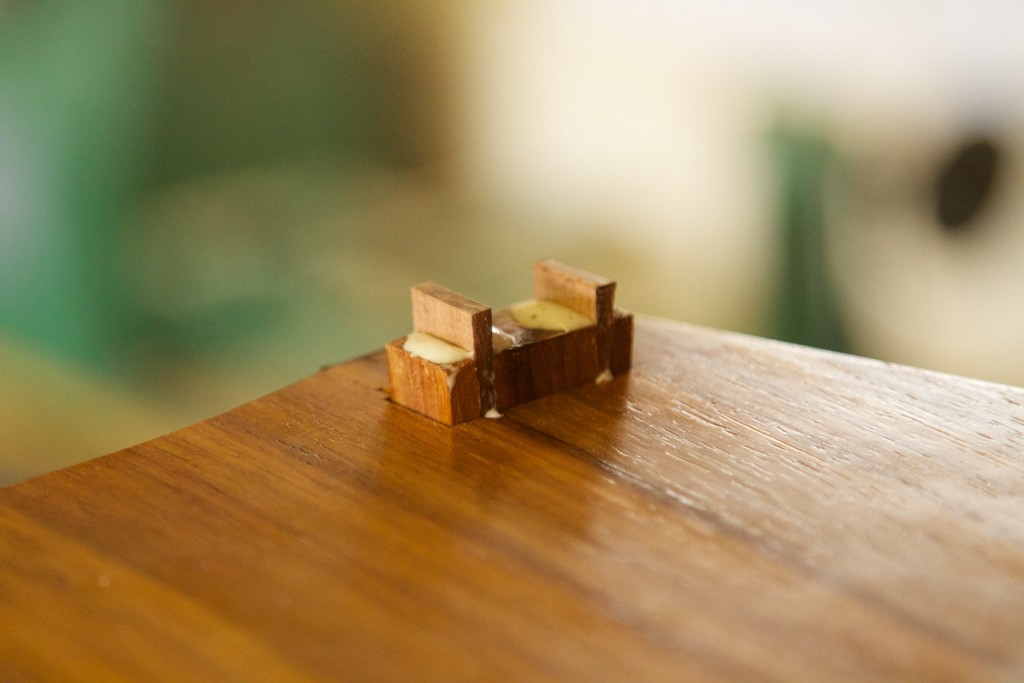
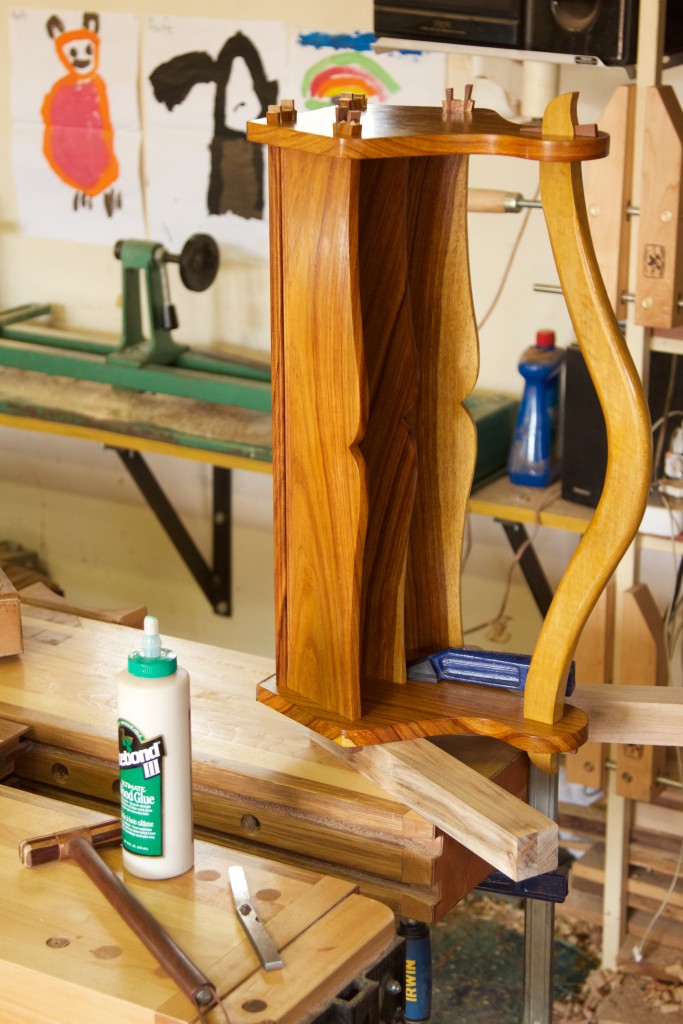
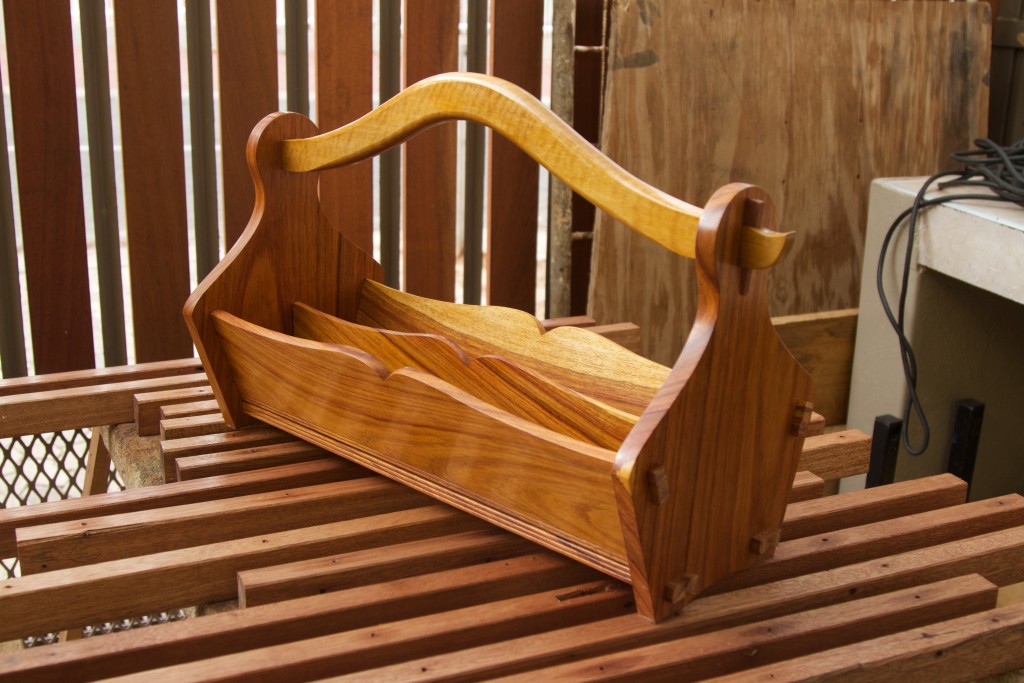







Methylated spirits and denatured alcohol are one and the same – ethanol with an additive, usually methanol, added to prevent consumption. The most common dye is methyl violet, but your local presumably uses methylene blue or methyl blue. All of the dyes are in such small traces that they simply get overwhelmed.
Hi Ian
Thank you for the explanation, you clearly know a lot about this stuff. I am just glad that I now have a potion to dilute my shellac with as it is by far the best finish I have worked with. Next year I want to try and acquire a clear version of shellac through Amazon. The stuff I have at the moment has a slight orange colour.
Please stay in touch.
Gerhard
Gerhard,
Now that, is precise… absolutely first class, great work! I love the tusked tenons and the shellac really did wonders for the grain and figure in that wood.
I don’t think that I have ever seen protruding wedged trough tenons before. I like it.
Jonathan
Hi Jonathan
Thank you for the complement, if you think something is precise, it really must be! I am very excited about researching this whole Japanese joinery thing a bit more in the next few years. It is a completely different way of thinking about joinery and seems to be especially sympathetic to the effects of wood movement. If they were able to build temples out of wood that is several hundreds of years old and still in pristine condition, they must be doing something right.
Have a wonderful day.
Gerhard
Very nice joinery Gerhard, bravo.
Now those Blue ass monkeys would be able to take off with your cutlery in style 🙂
Bob, running and ducking thru the jungle 🙂
Thank you Bob, it is much appreciated. You know how to wind me up. Those monkeys have trouble coming to a cinema near them, very soon too!!
If they touch this toolbox, it will be the last thing they touch!
I am looking forward to see what comes out of your Santa shop.
Kind regards
Gerhard
What species of wood was used for this project?
Hi skirincich
I used what is referred to as Dolfhout or Kiaat in Afrikaans. Common English names include Bloodwood, Paddle-wood, Transvaal Teak, here is a link where you can read all about it http://www.plantzafrica.com/plantnop/pterocarpangol.htm
You can also check out part one of this series where you will be able to see what the original board looked like, here http://www.jenesaisquoiwoodworking.com/japanese-toolbox-inspired-knife-and-fork-carrier-part-1/
Thank you for your interest.
Kind regards
Gerhard